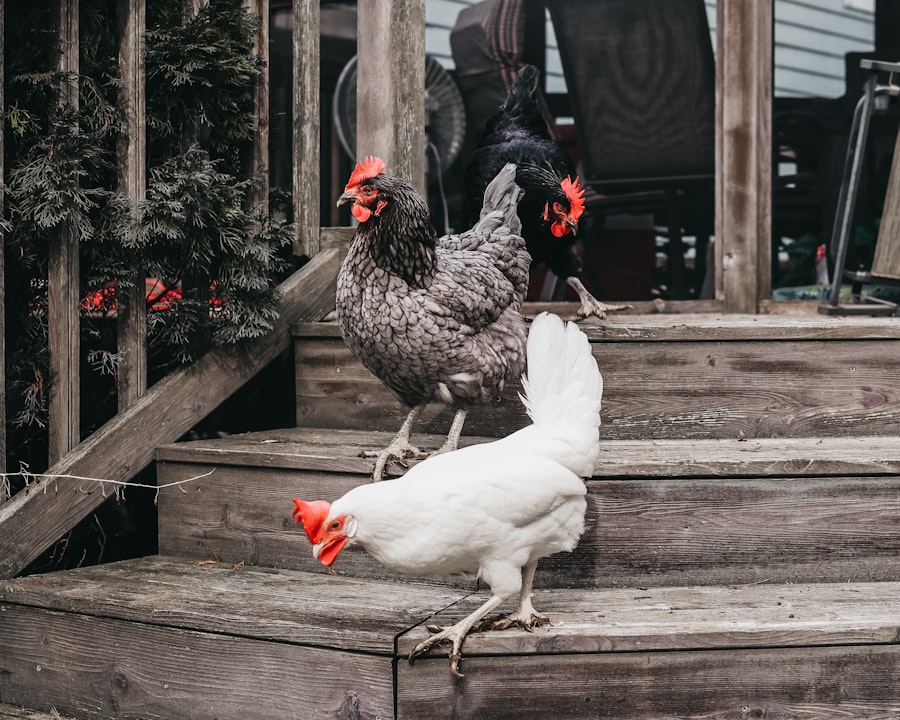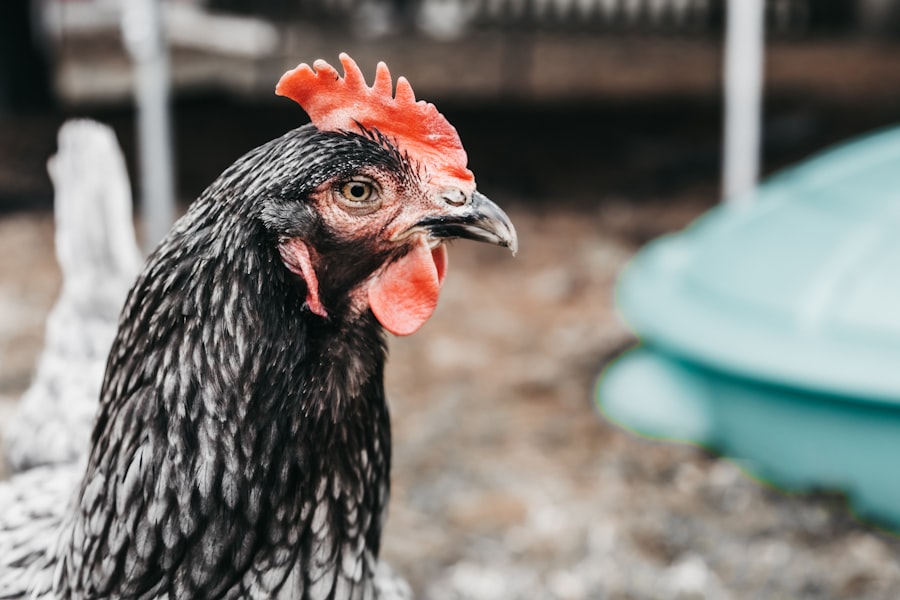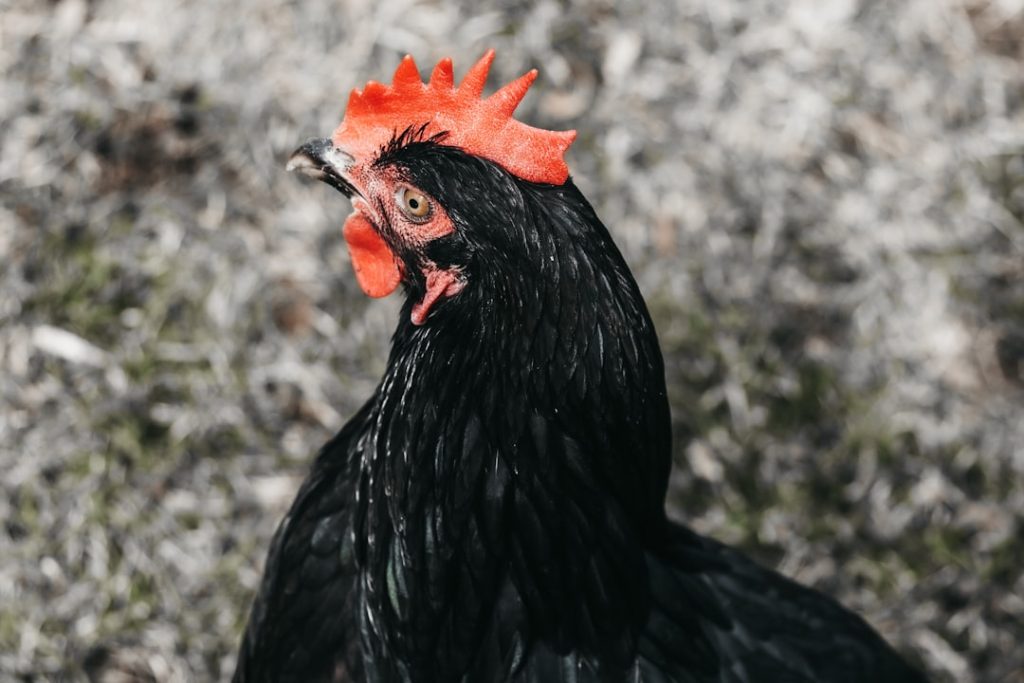Chickens require specific space allocations for optimal health and well-being. These space requirements include both indoor and outdoor areas for movement and foraging. The necessary space can vary based on factors such as breed, age, and the intended purpose of the chickens.
For instance, laying hens typically need more space than meat birds, and larger breeds generally require more room than smaller ones. As a general guideline, each chicken should be provided with a minimum of 2-3 square feet of indoor space and 8-10 square feet of outdoor space. This allocation allows chickens to move comfortably and engage in natural behaviors such as scratching, dust bathing, and foraging.
When planning a chicken coop and run, or determining the land area needed for a flock, it is crucial to consider these space requirements. In addition to physical space, chickens need access to fresh air, sunlight, and natural materials like grass, soil, and insects. These elements are vital for their physical and mental health.
Insufficient space for roaming and foraging can lead to stress, boredom, and aggressive behavior in chickens. Moreover, inadequate space can result in health issues including obesity, feather picking, and respiratory problems. Understanding and meeting the space requirements for chickens is essential for providing a healthy and enriching environment for these birds.
Table of Contents
- 1 Factors to consider when determining the amount of land for chickens
- 2 The importance of providing enough space for chickens to roam and forage
- 3 How much space is needed for chicken coops and runs
- 4 Tips for maximizing the use of available land for chickens
- 5 Potential issues that can arise from not providing enough land for chickens
- 6 Finding a balance between providing enough land for chickens and maintaining a sustainable environment
- 7 FAQs
Key Takeaways
- Chickens require a minimum of 2-3 square feet of space per bird in the coop and 8-10 square feet in the run.
- Factors to consider when determining the amount of land for chickens include the breed, purpose (meat or eggs), and the availability of free-range opportunities.
- Providing enough space for chickens to roam and forage is important for their physical and mental well-being.
- Chicken coops and runs should be spacious enough to accommodate the number of birds and allow for easy cleaning and maintenance.
- Maximize the use of available land for chickens by rotating grazing areas, using movable coops, and planting forage crops.
- Not providing enough land for chickens can lead to overcrowding, stress, aggression, and an increased risk of disease.
- Finding a balance between providing enough land for chickens and maintaining a sustainable environment involves proper waste management, land rotation, and conservation practices.
Factors to consider when determining the amount of land for chickens
Number of Chickens and Purpose of Keeping
The number of chickens in the flock is a crucial consideration, as each bird requires a certain amount of indoor and outdoor space to thrive. The purpose of keeping chickens, whether for eggs or meat, also plays a role in determining the necessary land size.
Breed and Environmental Considerations
The breed of chicken is another important factor, as larger breeds may require more space than smaller ones. The terrain and vegetation of the land are also vital, as chickens need access to grass, soil, and insects to engage in natural behaviors like foraging.
Climate and Weather Conditions
The climate and weather conditions of the area must also be considered. Extreme temperatures or heavy rainfall may necessitate additional shelter and protection for the chickens. By taking all these factors into account, you can provide a suitable environment for your flock to flourish.
The importance of providing enough space for chickens to roam and forage

Providing enough space for chickens to roam and forage is crucial for their physical and mental well-being. Chickens are natural foragers and enjoy scratching at the ground, pecking at insects, and dust bathing in the soil. These activities not only provide them with essential nutrients and exercise but also help to keep them mentally stimulated and content.
Without enough space to engage in these natural behaviors, chickens can become stressed, bored, and even aggressive. Inadequate space can also lead to health issues such as obesity, feather picking, and respiratory problems. In addition to physical and mental well-being, providing enough space for chickens to roam and forage can also have a positive impact on the quality of their eggs or meat.
Chickens that have access to fresh air, sunlight, and natural materials such as grass and insects are generally healthier and produce higher quality products. Therefore, it is important to provide enough space for chickens to roam and forage in order to ensure their overall well-being and the quality of their products.
How much space is needed for chicken coops and runs
When it comes to chicken coops and runs, the amount of space needed can vary depending on the size of the flock and the purpose of keeping chickens. In general, it is recommended to provide at least 2-3 square feet of indoor space per chicken in the coop and 8-10 square feet of outdoor space per chicken in the run. This allows for the chickens to move around comfortably and engage in natural behaviors such as scratching, dust bathing, and foraging.
The coop should also have adequate ventilation, natural light, and nesting boxes for the chickens to lay their eggs. The size of the coop and run should also take into account any future expansion of the flock. It is important to plan ahead and ensure that there is enough space for additional chickens if needed.
Additionally, the coop and run should be predator-proof and provide protection from extreme weather conditions such as heat, cold, and rain. Overall, it is important to provide enough space for chicken coops and runs in order to create a safe and comfortable environment for the flock.
Tips for maximizing the use of available land for chickens
Maximizing the use of available land for chickens can be achieved through several strategies. One way to maximize land use is by implementing rotational grazing or pasture management. This involves dividing the land into smaller sections and rotating the flock between these sections on a regular basis.
This allows the land to recover from grazing pressure while providing fresh grass and insects for the chickens to forage on. Another way to maximize land use is by incorporating vertical space into the chicken coop and run. This can be done by adding roosts, perches, or climbing structures that allow the chickens to utilize vertical space in addition to horizontal space.
Utilizing vertical space not only provides more room for the chickens but also encourages natural behaviors such as roosting. Additionally, planting trees or shrubs in the chicken area can provide shade, shelter, and additional foraging opportunities for the flock. Trees and shrubs also help improve soil quality and provide habitat for beneficial insects.
Overall, there are several tips for maximizing the use of available land for chickens, and it is important to consider these strategies in order to create a sustainable environment for the flock.
Potential issues that can arise from not providing enough land for chickens

The Consequences of Overcrowding
One of the primary concerns of not providing enough land is overcrowding, which can lead to stress, aggression, and health problems among the chickens. This can also increase competition for resources such as food, water, and nesting spaces.
Poor Air Quality and Respiratory Issues
Inadequate space can also lead to poor air quality within the coop or run, resulting in respiratory problems among the chickens.
Boredom, Behavioral Issues, and Overall Well-being
Furthermore, not providing enough space for chickens to roam and forage can lead to boredom and behavioral issues such as feather picking or egg eating. Overall, not providing enough land for chickens can have serious consequences on their physical and mental well-being.
Finding a balance between providing enough land for chickens and maintaining a sustainable environment
Finding a balance between providing enough land for chickens and maintaining a sustainable environment is essential for creating a healthy and productive flock. One way to achieve this balance is by implementing sustainable land management practices such as rotational grazing or pasture management. This allows the land to recover from grazing pressure while providing fresh grass and insects for the chickens to forage on.
Another way to maintain a sustainable environment is by incorporating permaculture principles into the chicken area. This involves designing the environment in a way that mimics natural ecosystems and maximizes resource efficiency. For example, planting trees or shrubs in the chicken area can provide shade, shelter, and additional foraging opportunities for the flock while improving soil quality.
Overall, finding a balance between providing enough land for chickens and maintaining a sustainable environment requires careful planning and consideration of various factors such as flock size, land size, terrain, vegetation, climate, and future expansion. By taking these factors into account and implementing sustainable practices, it is possible to create a healthy and productive environment for chickens while preserving the natural resources of the land.
If you’re considering keeping chickens, you may also be interested in learning about the benefits of using a heater for a chicken coop. This article from Poultry Wizard discusses the importance of providing warmth for your chickens during colder months to ensure their health and egg production. Check out the article here for more information on how to keep your chickens comfortable and productive year-round.
FAQs
How much land do chickens need?
Chickens need at least 2-3 square feet of space per bird in a coop, and 8-10 square feet per bird in an outdoor run.
How much land do I need to keep chickens for eggs?
For a small flock of chickens kept for egg production, you will need at least 1/4 to 1/2 acre of land to provide enough space for the birds to roam and forage.
Can I keep chickens in a small backyard?
Yes, you can keep a small flock of chickens in a backyard, as long as you provide enough space for them to move around and access to fresh air and sunlight.
What are the benefits of free-ranging chickens?
Free-ranging chickens have access to a variety of insects, plants, and other natural foods, which can improve the quality of their eggs and provide them with a more natural and healthy lifestyle.
How much land do I need to keep chickens for meat?
If you are raising chickens for meat, you will need at least 1/4 to 1/2 acre of land to provide enough space for the birds to roam and forage, or you can use a chicken tractor to rotate them on smaller plots of land.
Meet Walter, the feathered-friend fanatic of Florida! Nestled in the sunshine state, Walter struts through life with his feathered companions, clucking his way to happiness. With a coop that’s fancier than a five-star hotel, he’s the Don Juan of the chicken world. When he’s not teaching his hens to do the cha-cha, you’ll find him in a heated debate with his prized rooster, Sir Clucks-a-Lot. Walter’s poultry passion is no yolk; he’s the sunny-side-up guy you never knew you needed in your flock of friends!







